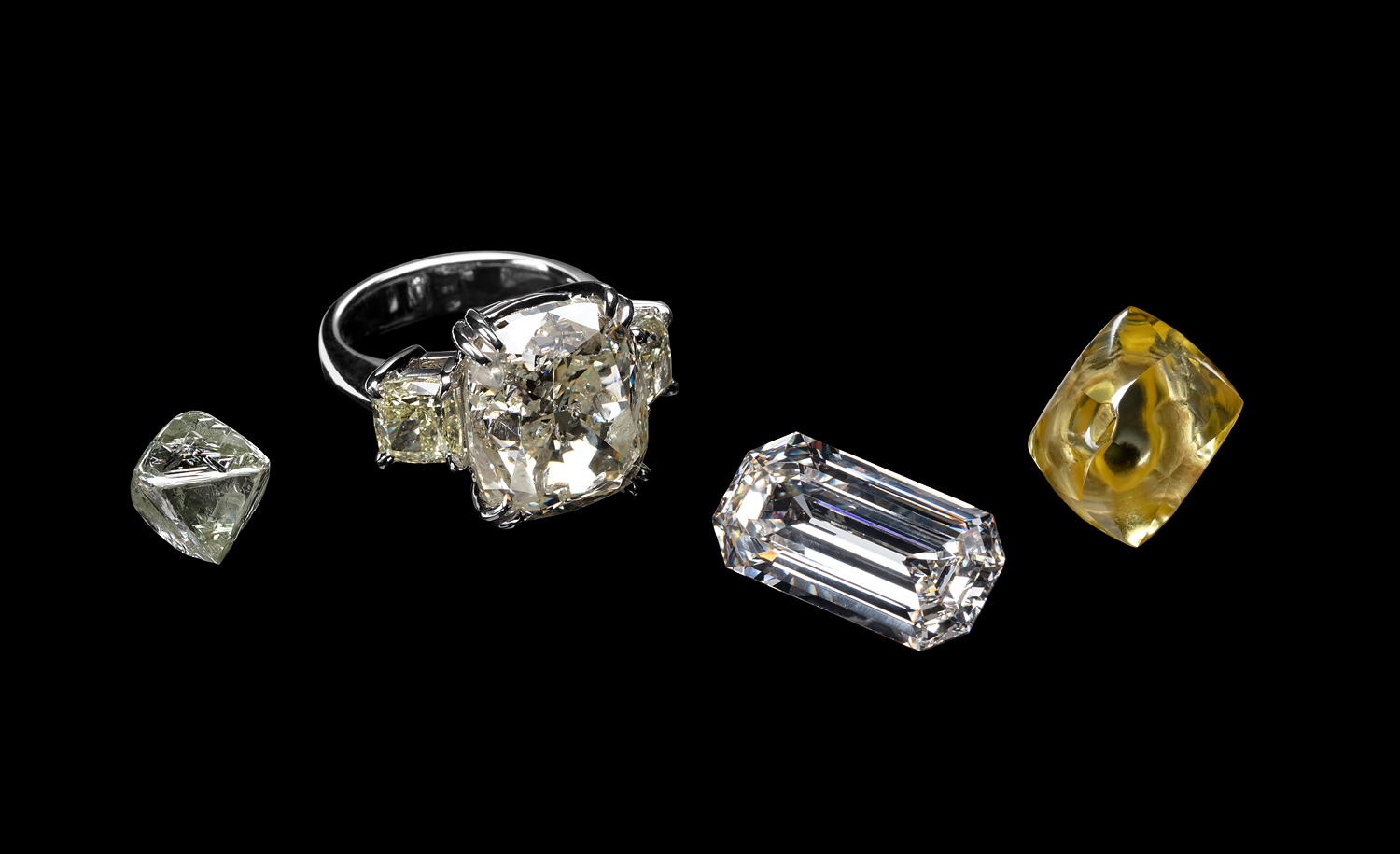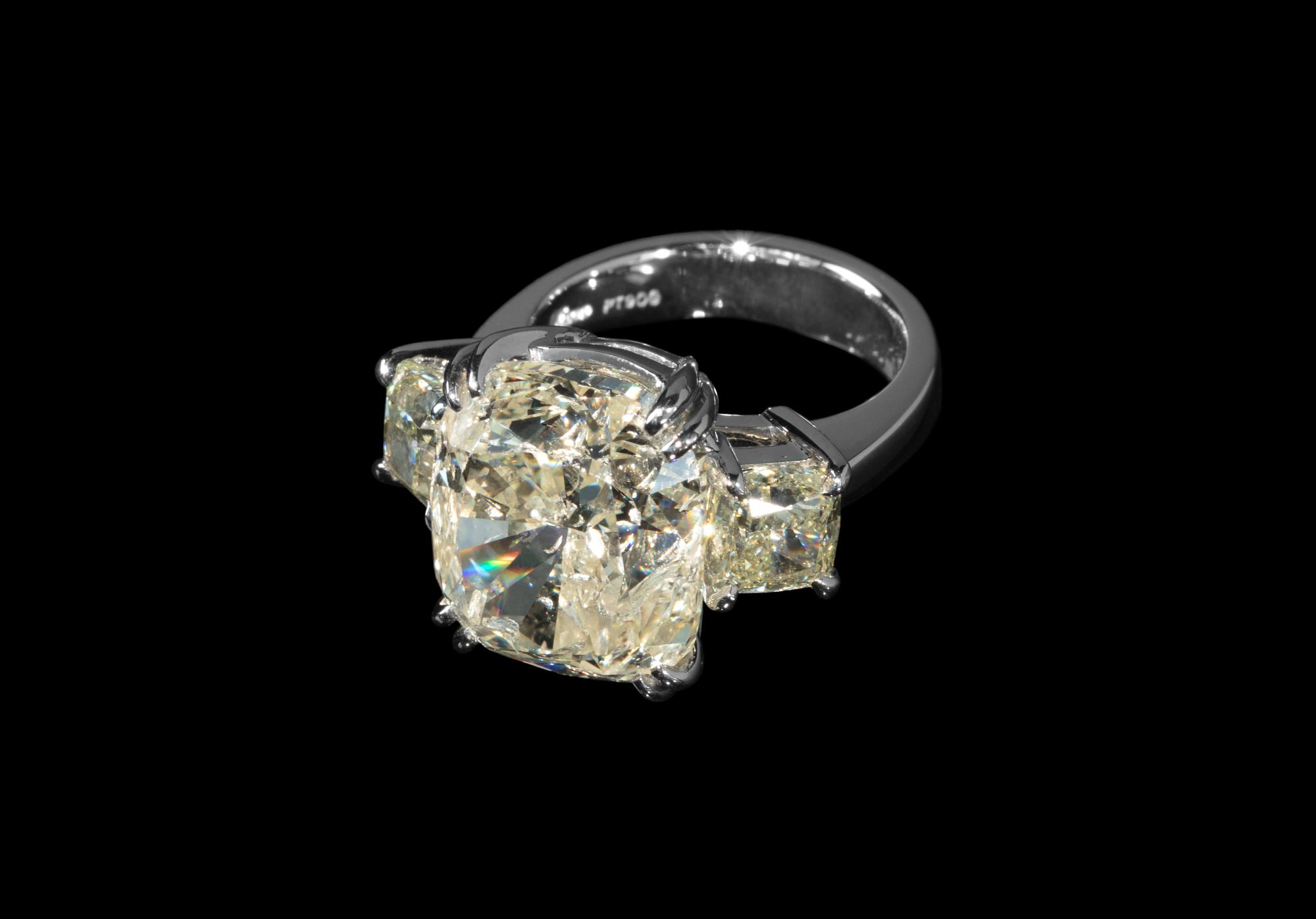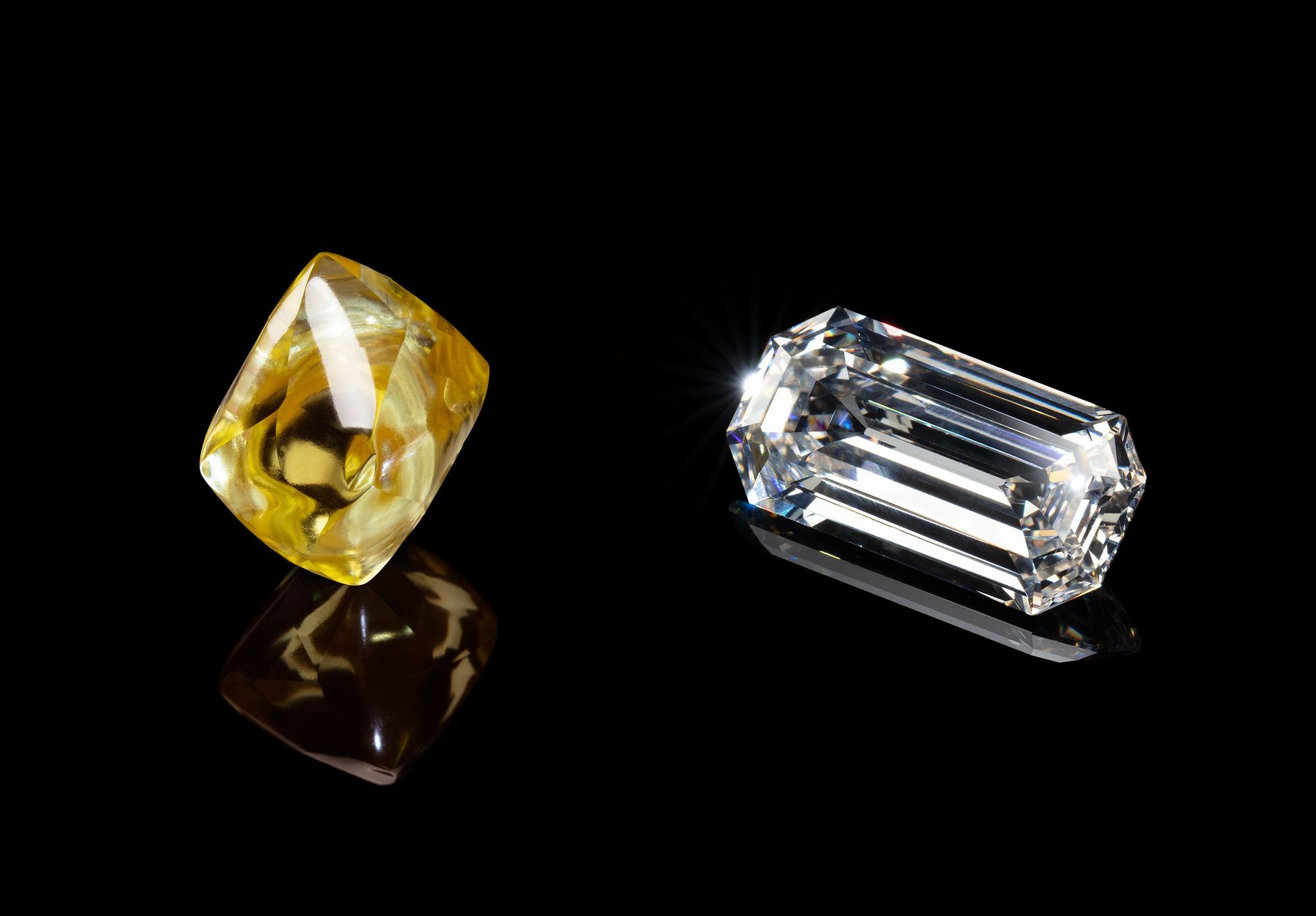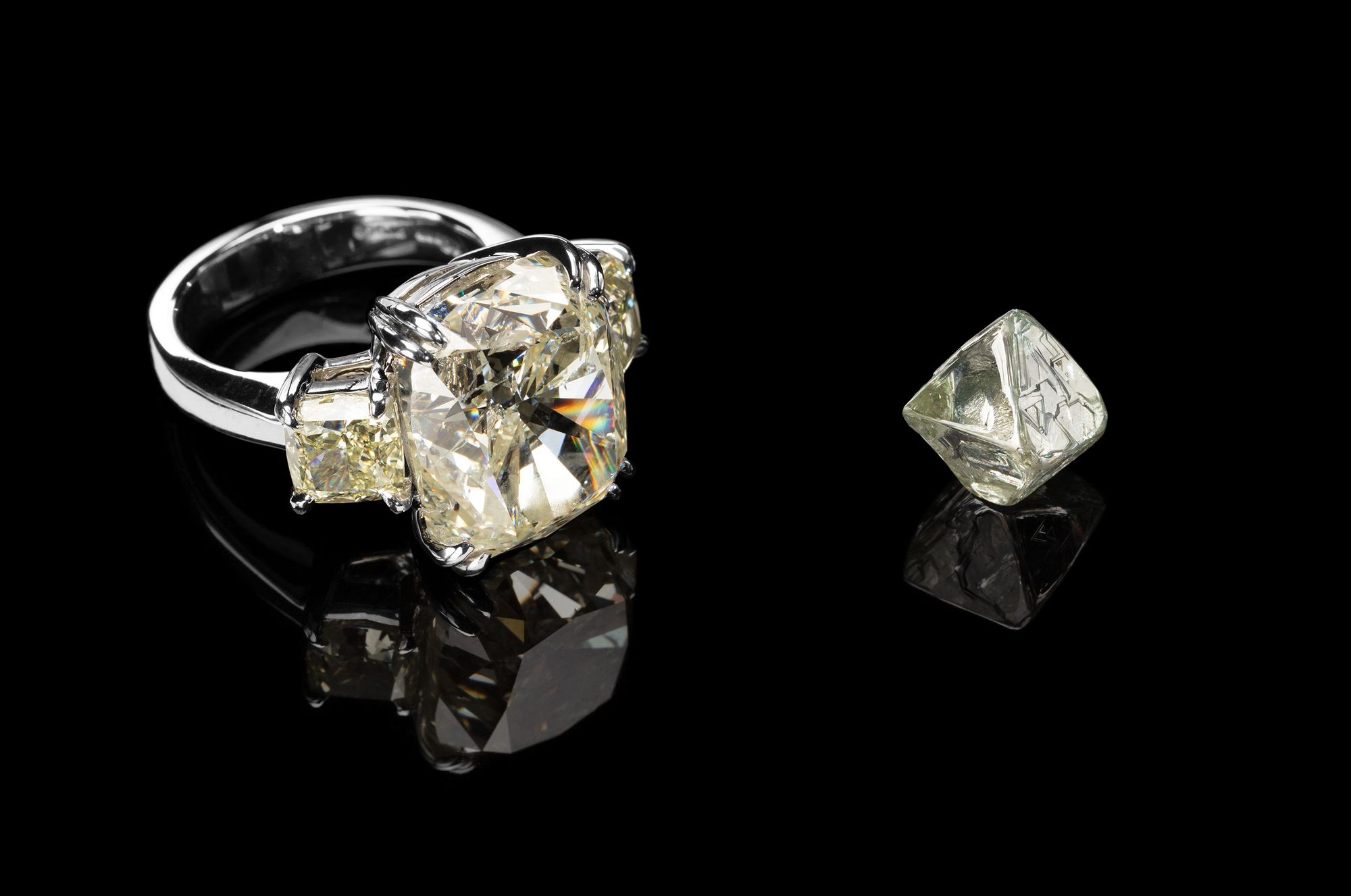Extraordinary American Diamonds
A new exhibit at the Smithsonian unveils some of the largest and finest diamonds found in the U.S., including recent gifts to the National Gem Collection
Source: Smithsonian News Release, June 8, 2022

On June 10, the Smithsonian’s National Museum of Natural History unveiled “Great American Diamonds,” a new exhibit displaying four of the most stunning diamonds ever found in the United States.
Some of the new gems on display are record holders, including the Freedom Diamond, the largest faceted diamond ever to originate in the United States, and the Uncle Sam Diamond, an emerald-cut stone fashioned from the largest uncut American diamond ever discovered. For decades, the Uncle Sam Diamond was feared to have been lost before recently resurfacing in a private collection. “Great American Diamonds” is the first time it has been displayed in more than 50 years.
These precious gemstones hail from the only two diamond mines that have operated in the United States: Arkansas’ Crater of Diamonds (1919–1926) and Colorado’s Kelsey Lake Mine (1996–2001). Together, these sites produced tens of thousands of carats of rough diamonds.
“Most people are surprised to learn that diamonds have been mined in the United States, and as the national museum, we are delighted to introduce these great American diamonds to our visitors,” said mineralogist Jeffrey Post, the museum’s curator-in-charge of gems and minerals.
The flawless 12.4-carat pinkish-brown Uncle Sam Diamond was cut from a crystal weighing a whopping 40.23 carats that was discovered at Crater of Diamonds in 1924, making it the largest faceted diamond ever discovered in the Arkansas mine. The cushion-cut Freedom Diamond, which is now set in a ring, was fashioned from a 28-carat diamond crystal discovered at the Kelsey Lake Mine in 1997.

These American diamonds join the Smithsonian’s National Gem and Mineral Collection, the world’s most visited collection of gems, thanks to gifts by Peter Buck (Uncle Sam Diamond) and Robert E. and Kathy G. Mau (Freedom Diamond). The national collection contains more than 10,000 precious stones and pieces of jewelry, including the iconic Hope Diamond.
"Amazingly, the Uncle Sam and Freedom diamonds were donated to our national collection within a month of each other. The generosity of the donors ensure that these great Earth treasures will forever belong to the people of the United States, and the world." – Jeffrey Post, Curator-in-Charge of Gems & Minerals
In “Great American Diamonds,” the two new gems will be displayed alongside two additional American diamonds from the museum’s collection. Joining the Uncle Sam Diamond from Arkansas is the “Canary Diamond,” a golden-yellow diamond crystal weighing nearly 18 carats. This stone is one of the largest uncut diamond crystals from Arkansas. It was discovered in 1917 and acquired by famed civil engineer and mineral collector Washington Roebling, whose son donated it to the Smithsonian nearly a century ago.

Alongside the Freedom Diamond will be the 6.5-carat Colorado Diamond Crystal, which displays the typical eight-sided (octahedral) shape of natural diamond crystals.

Despite the beauty of the diamonds they produced, neither American mine proved to be commercially successful, causing each to close after less than a decade of operation.
That does not mean that the United States is devoid of diamonds. The Arkansas site where the Uncle Sam Diamond was found has been refashioned into a state park that manages one of the world’s only diamond-bearing sites accessible to the public. Each year, visitors discover and get to keep roughly 600 new diamonds, potentially unearthing the next “Great American Diamond.”
About the National Museum of Natural History
The National Museum of Natural History is connecting people everywhere with Earth’s unfolding story. It is one of the most visited natural history museums in the world. Opened in 1910, the museum is dedicated to maintaining and preserving the world’s most extensive collection of natural history specimens and human artifacts. The museum is open daily, except December 25, from 10 a.m. to 5:30 p.m. Admission is free. For more information, visit the museum on its website, blog, Facebook, Twitter and Instagram.
